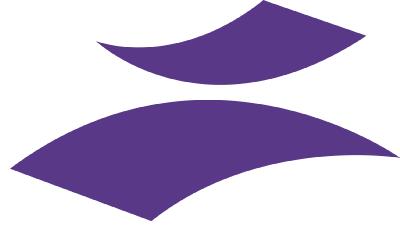December 5, 2002
Students give A&S an ID boost
When the College of Arts and Sciences was looking for some top-notch designers, it didn’t have to search very far. There is, after all, a School of Art within the college, and within that school is a program known as Visual Communication Design. So who else should the college turn to when it wanted a new look but its own students?
The new look was the last step in a process the college had been involved in for several years — a process of taking a hard look at itself and formulating a mission statement and goals.
“What we heard loud and clear from our board and others on the outside was that they just didn’t get it,” A&S Dean David Hodge says. “They told us the college is too complicated; they were overwhelmed by all the information about it. We felt that for internal purposes we needed a sense of common identity and for external purposes we needed to provide a way for people to connect with the college and to know that it is an important part of the University.”
So the college embarked on a series of meetings involving its faculty and staff on the inside and its advisory board and others from the outside. In addition to the mission statement and goals, it came up with a tagline to succinctly express the college’s purpose: “Understanding what is, imagining what can be.”
And that’s where the students came in. For years the college has used a drawing of the Denny Hall cupola as its symbol. It was a fine symbol of tradition certainly, but, as Marilyn Kliman, the college’s director of communication, puts it, “This is not your father’s Oldsmobile; the college has changed. We didn’t think the cupola was conveying the right image or the right information.”
So Hodge and company went to School of Art Director Chris Ozubko, who made arrangements for a group of students in Visual Communication Design to create a new symbol, or mark, for A&S.
The 21 students were enrolled in a class aptly titled “Case Studies.” And as a group they listened to Hodge, Kliman and A&S advisory board member George Lowe talk about the college and what they wanted the design to say. Then class members began doing research about the college.
“Part of the college’s problem was that people at the UW don’t know what A&S is because it’s such a big entity,” says Halli Brunkella, one of the 25,000 students in the college’s 41 departments. “You don’t have a sense that you belong to it because it’s so large. So it was a real eye-opening experience for me to learn the benefits of a liberal arts education — why we’re better students because of it.”
Each student in the class had an opportunity to create a mark to represent the college. Then the class chose the five it liked the best and split into teams to do further work on those five. At the end of the quarter all five teams made presentations to A&S officials.
The mark chosen was designed by Wilmer Galindo and consists of two abstract shapes, one atop the other. Galindo says it represents two paths to correspond to the two thoughts in the tagline — understanding what is and imagining what can be. Other team members working on the chosen mark included Brunkella, Heidi Waggoner, Marcela Vorel and Jason Tselentis.
Hodge describes the new mark as having “pop and pizzazz. The students showed a stunning ability to create a mark that works,” he says.
The students say they learned a lot from the project.
“It was a lot of great real-world experience dealing with clients, especially with such a large organization,” says Brunkella. “A lot of people you have to please, a lot of constraints you have to conform to.”
“A lot of compromises that need to be made,” adds Waggoner.
“Teamwork, too,” Vorel says, “because in a design firm it’s all about teamwork. This was the first time we really worked in teams on a design.”
Hodge says the final product was not the only good thing about working with the students. “It’s always a superior pleasure to see students at their best,” he says. “These were third quarter juniors when we started — very accomplished. Just watching them do what they do was wonderful.
“But also, to see the college through these students’ eyes is a gift I’ll never forget. They started with only the vaguest notion that they were in the college, let alone what it does. So we talked to them and gave them our collective ideas. They listened and they got it. And they gave us back their version of the value of a liberal education — expressed in their own words — and that is pretty cool.”

